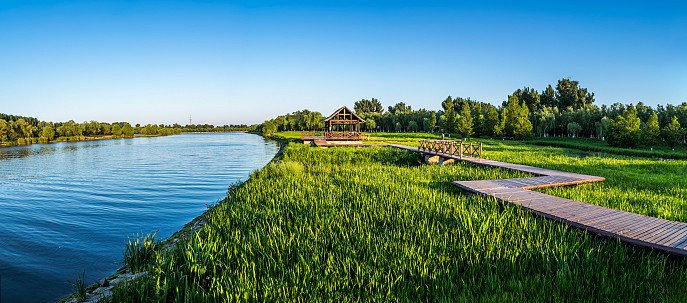Green Areas in Beijing Grow to Size of 219 Olympic Forest Parks in 10 Years

The Grand Canal Forest Park [Photo via VCG]
China's first National Ecosystem Day was observed on August 15, 2023. It is learned that Beijing, over the past decade, has added 2.19 million mu (14.6 hectares) of green areas, which is equivalent to 219 Olympic Forest Parks in size, and planted 103 million trees of various types. According to scientific statistics, the newly added green areas have significantly improved the air purification performance in the urbanized areas, reducing the amount of PM2.5 by 267,600 tons per year, and increasing the supply of oxygen by 1,957,700 tons at the same time.
As the green areas continue to be developed and added, Beijing has strengthened the scientific nurturing of its forest resources, making the city's forests a stable, high-quality carbon pool. By the end of 2022, the annual carbon sink capacity of the city's ecosystem, which consists of forests and grasslands, has reached an estimated 8.8 million tons, which is meaning that the carbon emissions of 2.93 million private cars in Beijing for a whole year have been neutralized.
Beijing has continued its efforts in biodiversity conservation, building 295 communities featuring biodiversity conservation and 491 small and micro wetlands within the city, complemented by afforestation and greening projects, to create a broader range of habitats for wildlife. Currently, 79 nature reserves have been built in Beijing, enabling more than 90 percent of the city's key protected wildlife and habitats to be effectively protected. According to the latest data, a total of 608 species of terrestrial wild vertebrates and 2,088 species of plants have been found in the city. This capital city is striving to build itself as a "City of Biodiversity".
(Source: CCTV News App)


